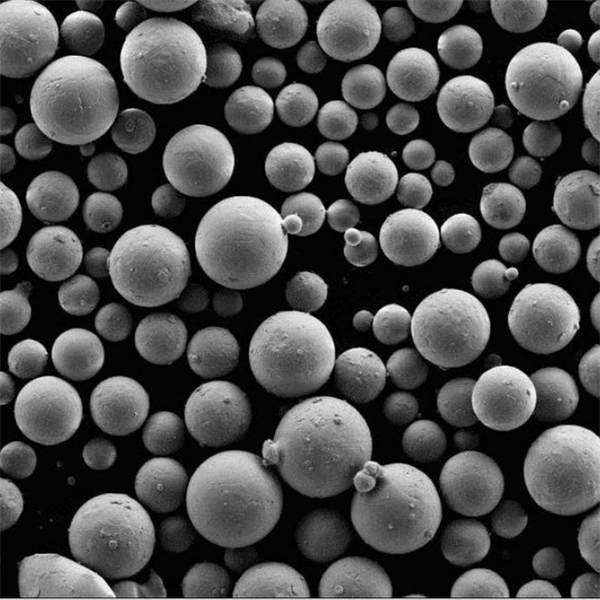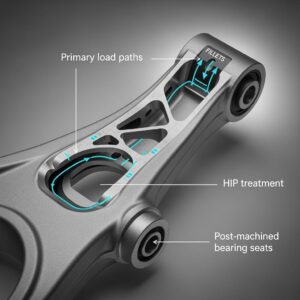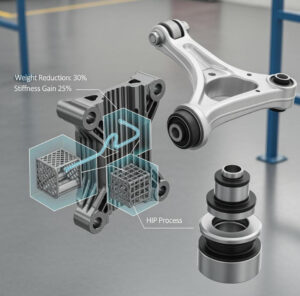High-Temperature Alloy EP648
Table of Contents
Overview of High-Temperature Alloy EP648
When it comes to materials designed for extreme environments, high-temperature alloys stand out due to their remarkable ability to withstand harsh conditions. Among these, EP648 has emerged as a crucial player in various industrial applications. But what exactly is High-Temperature Alloy EP648, and why is it so highly regarded? This article dives deep into the composition, characteristics, applications, advantages, and disadvantages of EP648, aiming to provide a thorough understanding of this unique material.
What is High-Temperature Alloy EP648?
High-Temperature Alloy EP648 is a nickel-based superalloy, primarily designed for applications that require exceptional resistance to high temperatures and mechanical stress. Superalloys like EP648 are engineered for use in environments where ordinary metals would fail—think aerospace engines, gas turbines, and nuclear reactors. With its impressive resistance to oxidation, corrosion, and thermal creep, EP648 has become a go-to material in industries where reliability and performance are paramount.

Composition of High-Temperature Alloy EP648
The magic of EP648 lies in its carefully balanced chemical composition, which gives it the ability to perform exceptionally under extreme conditions. Here’s a closer look at the primary elements that make up this high-performance alloy:
| Element | Percentage (%) | Role |
|---|---|---|
| Nickel (Ni) | 58-65 | Base metal, providing excellent resistance to heat and corrosion. |
| Chromium (Cr) | 17-21 | Enhances oxidation resistance and contributes to the formation of a protective oxide layer. |
| Cobalt (Co) | 10-15 | Improves high-temperature strength and stability. |
| Molybdenum (Mo) | 2.5-4.5 | Enhances strength at high temperatures and resists thermal creep. |
| Tungsten (W) | 2.5-4.5 | Increases strength and hardness, particularly in high-stress applications. |
| Aluminum (Al) | 0.5-1.5 | Contributes to oxidation resistance and helps form a protective alumina layer. |
| Titanium (Ti) | 0.5-1.5 | Improves overall strength and resistance to thermal fatigue. |
| Carbon (C) | 0.03-0.10 | Provides solid solution strengthening. |
| Boron (B) | 0.001-0.005 | Enhances grain boundary strength, reducing the risk of cracking. |
| Zirconium (Zr) | 0.03-0.10 | Refines grain structure and improves high-temperature ductility. |
This meticulous composition is what sets EP648 apart, making it highly resistant to the challenges posed by high-temperature environments.
Characteristics of High-Temperature Alloy EP648
The characteristics of EP648 are directly tied to its composition, and these traits are what make it so valuable in industrial applications. Here’s an in-depth look at the key characteristics:
1. High-Temperature Strength
EP648 can maintain its mechanical properties even at temperatures exceeding 1,000°C (1,832°F). This is crucial for applications like gas turbines, where materials are subjected to extreme thermal loads.
2. Oxidation and Corrosion Resistance
Thanks to its high chromium and aluminum content, EP648 forms a protective oxide layer that shields it from oxidation and corrosion, even in the most aggressive environments.
3. Thermal Creep Resistance
Thermal creep, the tendency of a material to slowly deform under constant stress at high temperatures, is a significant concern in many industrial applications. EP648’s composition is specifically engineered to resist this phenomenon, ensuring long-term reliability.
4. Excellent Weldability
Unlike some high-temperature alloys that can be challenging to work with, EP648 offers good weldability, making it easier to incorporate into complex assemblies without compromising performance.
5. Fatigue Resistance
In environments where components are subjected to cyclic loads and stresses, EP648’s resistance to fatigue ensures that it can endure without cracking or failing.
Applications of High-Temperature Alloy EP648
Given its impressive characteristics, EP648 finds use in a wide range of high-stress, high-temperature environments. Here’s where you’re most likely to encounter this alloy:
| Application | Details |
|---|---|
| Aerospace Engines | Used in turbine blades, exhaust systems, and other components exposed to extreme heat and pressure. |
| Gas Turbines | Integral in hot sections of land-based gas turbines, ensuring efficiency and longevity. |
| Nuclear Reactors | Applied in components that require resistance to radiation and extreme temperatures. |
| Chemical Processing | Used in equipment that must resist corrosive environments at high temperatures. |
| Power Generation | Essential in parts like heat exchangers and high-temperature fasteners. |
| Oil and Gas Industry | Utilized in downhole tools and equipment subjected to harsh conditions. |
| Heat Treatment Furnaces | Components made from EP648 can withstand the intense heat and cycles of industrial furnaces. |
| Automotive Turbochargers | Provides durability and performance in high-performance engines. |
| Marine Engineering | Used in marine turbines and exhaust systems due to its resistance to saltwater corrosion. |
| Cryogenic Equipment | Though designed for high temperatures, EP648’s toughness also makes it suitable for low-temperature applications. |
Advantages of High-Temperature Alloy EP648
Why choose EP648 over other high-temperature alloys? Here are some key advantages:
1. Superior Performance in Extreme Conditions
EP648 doesn’t just survive in high temperatures—it thrives. Its ability to maintain strength, resist oxidation, and prevent thermal creep makes it the ideal choice for demanding applications.
2. Long-Term Durability
In industries where downtime is costly, the long-term durability of EP648 ensures that components last longer, reducing the need for frequent replacements and maintenance.
3. Versatility
EP648 is not a one-trick pony. Its versatility across different industries—from aerospace to power generation—demonstrates its broad applicability.
4. Weldability
The alloy’s good weldability simplifies manufacturing processes, allowing for more complex designs and reducing the overall cost of production.
Disadvantages of High-Temperature Alloy EP648
Of course, no material is without its drawbacks. Here are some potential limitations of EP648:
1. Cost
High-performance alloys like EP648 are expensive to produce, which can be a significant consideration in large-scale applications.
2. Machinability
While EP648 offers good weldability, its machinability can be challenging, requiring specialized equipment and expertise.
3. Availability
Due to its specific composition and manufacturing requirements, EP648 may not be as readily available as other more common materials, potentially leading to longer lead times.
Comparing High-Temperature Alloy EP648 to Other Alloys
To fully appreciate the benefits of EP648, it’s helpful to compare it to other high-temperature alloys:
| Property | EP648 | Inconel 718 | Hastelloy X | Rene 41 |
|---|---|---|---|---|
| Maximum Operating Temp | 1,000°C | 700°C | 900°C | 980°C |
| Oxidation Resistance | Excellent | Good | Very Good | Excellent |
| Thermal Creep Resistance | Excellent | Moderate | Good | Excellent |
| Weldability | Good | Excellent | Good | Fair |
| Cost | High | Moderate | High | Very High |
EP648 vs. Inconel 718
While both EP648 and Inconel 718 are nickel-based superalloys, EP648 offers superior performance at higher temperatures, making it a better choice for extreme environments. However, Inconel 718 is more affordable and easier to machine, making it preferable for less demanding applications.
EP648 vs. Hastelloy X
Hastelloy X is known for its outstanding oxidation resistance, but EP648 surpasses it in terms of thermal creep resistance and high-temperature strength. However, Hastelloy X is easier to weld, which might make it a better choice in applications where this is a priority.
EP648 vs. Rene 41
Rene 41 is another high-temperature alloy with excellent strength and oxidation resistance. However, it is more expensive and harder to weld than EP648, which may limit its use in certain applications.
Specific Metal Powder Models Related to EP648
When it comes to manufacturing components from high-temperature alloys, metal powders are often used, particularly in additive manufacturing. Here are some specific metal powder models related to EP648:
| Metal Powder Model | Description |
|---|---|
| EP648-PM | A powder metallurgy version of EP648, designed for precision components in aerospace and power generation. |
| EP648-AM | Optimized for additive manufacturing, offering excellent flowability and consistent particle size. |
| EP648-HD | High-density powder for applications requiring maximum material integrity and minimal porosity. |
| EP648-FG | Fine-grained powder suitable for intricate components requiring high surface finish quality. |
| EP648-HT | Specifically developed for high-temperature applications, offering enhanced thermal stability. |
| EP648-MC | Medium-coarse powder designed for larger components, providing a balance between flowability and density. |
| EP648-LC | Low-carbon version of EP648, designed to reduce carbide precipitation and enhance weldability. |
| EP648-CR | Corrosion-resistant powder, ideal for chemical processing and marine applications. |
| EP648-RT | Rapid solidification powder, offering improved microstructural control for demanding applications. |
| EP648-NP | Non-porous powder designed for applications where material integrity is critical. |
These specific models are tailored to different manufacturing processes and application requirements, ensuring that EP648 can be utilized effectively across various industries.
Specifications, Sizes, and Standards for High-Temperature Alloy EP648
When selecting materials for a project, it’s crucial to ensure they meet specific standards and are available in the sizes needed. Here’s a breakdown of the specifications, sizes, and standards for EP648:
| Specification | Details |
|---|---|
| ASTM Standards | ASTM B637, ASTM B829, ASTM F3055 |
| Sizes Available | Rods, sheets, and powders in various diameters and thicknesses ranging from 0.25 mm to 100 mm. |
| ISO Standards | ISO 15156, ISO 5832 |
| Custom Sizes | Available upon request, depending on the application and manufacturing process. |
| Heat Treatment | Solution annealed at 1,050°C followed by rapid quenching. |
| Surface Finish | Available in polished, machined, or as-cast finishes. |
These specifications ensure that EP648 can be tailored to meet the rigorous demands of different industries, whether it’s for aerospace, power generation, or beyond.
Suppliers and Pricing Details for High-Temperature Alloy EP648
Finding the right supplier is key to ensuring the quality and availability of EP648. Here’s a list of some suppliers along with pricing details:
| Supplier | Location | Product Range | Estimated Price (per kg) |
|---|---|---|---|
| ATI Metals | USA | Rods, sheets, powders | $150 – $250 |
| Special Metals Corporation | UK | Rods, bars, powders | $160 – $270 |
| VDM Metals | Germany | Sheets, coils, rods | $145 – $240 |
| Carpenter Technology | USA | Rods, powders, wires | $155 – $260 |
| Sandvik Materials Technology | Sweden | Tubes, rods, powders | $170 – $280 |
| Haynes International | USA | Bars, plates, wires | $160 – $275 |
| Aperam Alloys | France | Rods, sheets, coils | $150 – $265 |
| Rolled Alloys | USA | Sheets, rods, plates | $140 – $250 |
| VDM Alloys | Germany | Powder, wire, rods | $165 – $260 |
| Allegheny Technologies | USA | Rods, wires, sheets | $155 – $265 |
Pricing can vary depending on the size, form, and quantity required, so it’s essential to get a precise quote based on your specific needs.
Pros and Cons of High-Temperature Alloy EP648
Making an informed decision requires weighing the pros and cons of EP648 against other materials. Here’s a comparative overview:
| Aspect | Pros | Cons |
|---|---|---|
| High-Temperature Strength | Exceptional, maintains integrity at 1,000°C | More expensive than other alloys |
| Oxidation Resistance | Excellent, forms protective oxide layer | Can be challenging to machine |
| Thermal Creep Resistance | Outstanding, ideal for long-term applications | Longer lead times due to availability |
| Weldability | Good, simplifies manufacturing processes | Specialized welding techniques required |
| Durability | Long-lasting, reduces maintenance costs | Initial cost is higher compared to alternatives |

FAQs
Q1: What makes EP648 better for high-temperature applications?
A1: EP648 is specifically engineered to withstand extreme temperatures, up to 1,000°C, without losing its mechanical properties. Its unique composition, particularly the high nickel and chromium content, provides exceptional resistance to oxidation, thermal creep, and corrosion, making it ideal for demanding environments like aerospace engines and gas turbines.
Q2: How does EP648 compare to other high-temperature alloys?
A2: Compared to other high-temperature alloys like Inconel 718 or Hastelloy X, EP648 offers superior thermal creep resistance and can operate at higher temperatures. However, it is more expensive and can be more challenging to machine, which may limit its use in some applications.
Q3: Can EP648 be used in additive manufacturing?
A3: Yes, EP648 is available in powder form specifically designed for additive manufacturing. Models like EP648-AM are optimized for this process, offering excellent flowability and consistent particle size, making it suitable for producing complex, high-performance components.
Q4: What industries commonly use EP648?
A4: EP648 is widely used in industries that require materials capable of withstanding extreme temperatures and stresses. This includes aerospace (turbine blades, exhaust systems), power generation (gas turbines, heat exchangers), chemical processing (corrosive environments), and the oil and gas industry (downhole tools).
Q5: Is EP648 difficult to machine?
A5: While EP648 offers good weldability, its machinability can be challenging due to its hardness and strength. Specialized tools and techniques are often required to machine EP648 effectively, which can increase manufacturing costs.
Q6: Are there any alternatives to EP648?
A6: Alternatives like Inconel 718, Hastelloy X, and Rene 41 are commonly used in high-temperature applications. However, each of these alloys has different strengths and weaknesses compared to EP648. For instance, Inconel 718 is easier to machine and less expensive but does not perform as well at very high temperatures.
Q7: How does the cost of EP648 compare to other alloys?
A7: EP648 is generally more expensive than other high-temperature alloys like Inconel 718 or Hastelloy X due to its superior performance and more complex composition. However, its long-term durability and resistance to extreme conditions can offset the higher initial cost.
Q8: Can EP648 be welded easily?
A8: EP648 offers good weldability compared to many other high-temperature alloys, making it easier to incorporate into complex assemblies. However, welding should be performed by skilled professionals to ensure the integrity of the material is maintained.
Q9: What forms is EP648 available in?
A9: EP648 is available in various forms, including rods, sheets, powders, and wires. It can also be custom-ordered in different sizes and finishes to meet specific project requirements.
Q10: Is EP648 suitable for cryogenic applications?
A10: Although EP648 is primarily designed for high-temperature environments, its toughness and durability also make it suitable for some cryogenic applications, where materials are subjected to extremely low temperatures.
Conclusion
High-Temperature Alloy EP648 is a remarkable material designed to meet the challenges of extreme environments. Whether it’s the searing heat of a gas turbine or the corrosive atmosphere of a chemical plant, EP648 offers the strength, durability, and resistance needed to ensure reliable performance. While it may come with a higher price tag and some machining challenges, the long-term benefits of using EP648 often outweigh these drawbacks. For industries where performance cannot be compromised, EP648 stands out as a top choice, offering the resilience and reliability that modern engineering demands.
Share On
MET3DP Technology Co., LTD is a leading provider of additive manufacturing solutions headquartered in Qingdao, China. Our company specializes in 3D printing equipment and high-performance metal powders for industrial applications.
Inquiry to get best price and customized Solution for your business!
Related Articles

Metal 3D Printing for U.S. Automotive Lightweight Structural Brackets and Suspension Components
Read More »About Met3DP
Recent Update
Our Product
CONTACT US
Any questions? Send us message now! We’ll serve your request with a whole team after receiving your message.

















